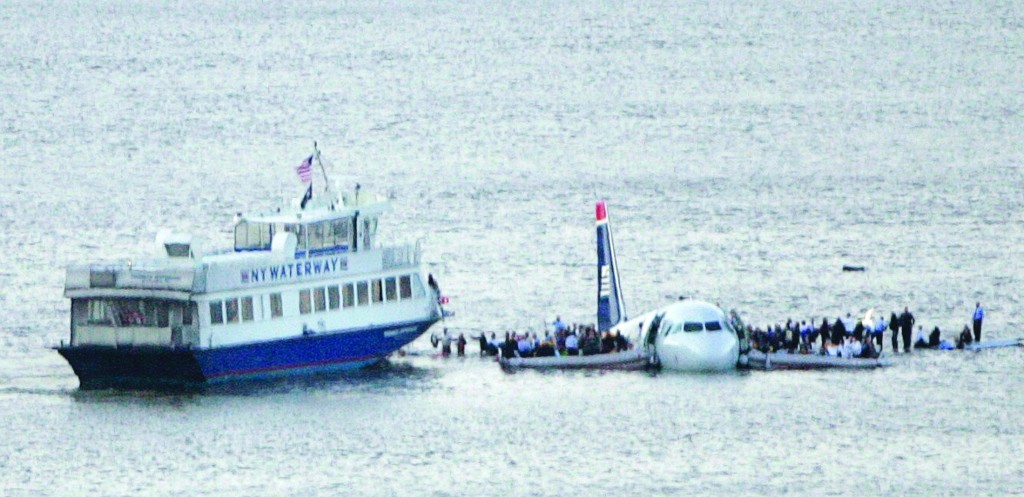‘Miracle on the Hudson’ Survivors Mark 5 Years

The pilots and some passengers on a plane that made an extraordinary landing on the Hudson River marked the fifth anniversary of that remarkable event on Wednesday, giving thanks to those who kept everyone who was on that flight alive.
“I’m filled with joy and gratitude about what was able to be accomplished by so many five years ago today and the fact that all 155 passengers and crew are here today because of it,” said Capt. Chesley “Sully” Sullenberger III, who gained instant fame for his calm handling of US Airways flight 1549.
The flight had just taken off from LaGuardia Airport when a flock of geese disabled the engines. Sullenberger safely glided to a water landing and all 155 passengers and crew members were rescued in what became known as the “miracle on the Hudson.”
Sullenberger and about a half-dozen passengers gathered at the NY Waterway ferry terminal to thank the ferry boat company, whose boats quickly got to the downed plane and rescued people. They then boarded a boat and sailed out to the area of the landing, where they raised a toast.

Five years later, “it feels like yesterday, every day,” said passenger Denise Lockie of Charlotte, N.C. “It’s a miracle and I’m just glad I’m here.”
Passenger Barry Leonard, of Charlotte, said those on the plane have seen children and grandchildren born in the past five years. “It made me think about things in a different way, no doubt,” he said.
The incident also led to changes in how the airline industry deals with bird strikes, said Michael Begier, national coordinator of the Airport Wildlife Hazards Program run by the U.S. Department of Agriculture.
It brought the idea that bird strikes can be dangerous to planes solidly into public consciousness, he said, leading to an increased willingness among airlines to report bird strike incidents.
By having more strike data, the government is better able to gauge how wildlife should be managed in the regions around airports, he said.
This article appeared in print on page 1 of edition of Hamodia.
To Read The Full Story
Are you already a subscriber?
Click "Sign In" to log in!

Become a Web Subscriber
Click “Subscribe” below to begin the process of becoming a new subscriber.

Become a Print + Web Subscriber
Click “Subscribe” below to begin the process of becoming a new subscriber.

Renew Print + Web Subscription
Click “Renew Subscription” below to begin the process of renewing your subscription.












